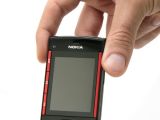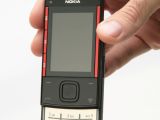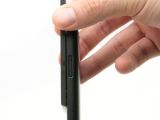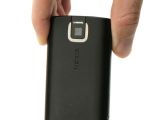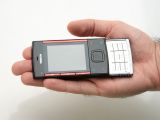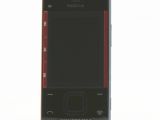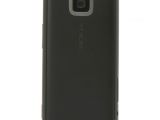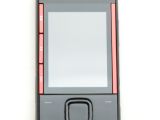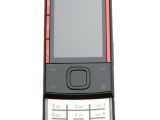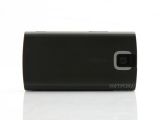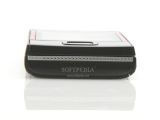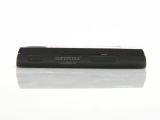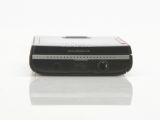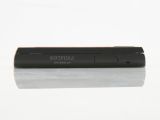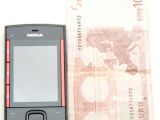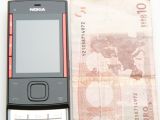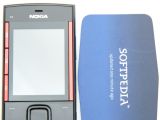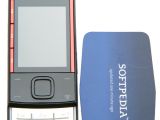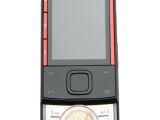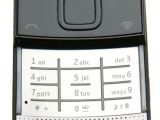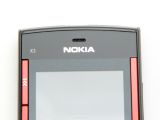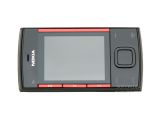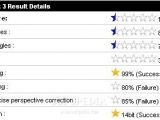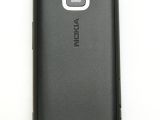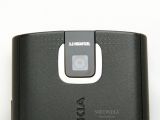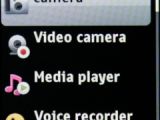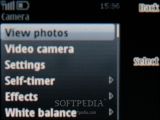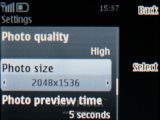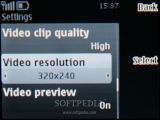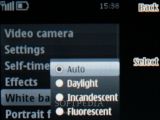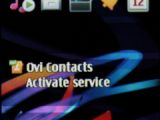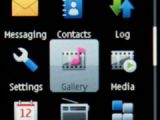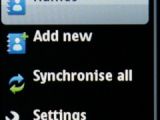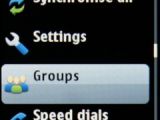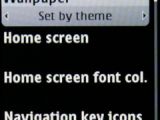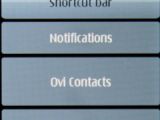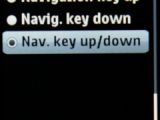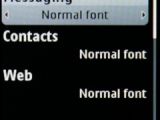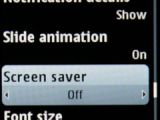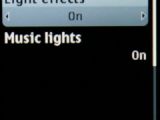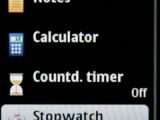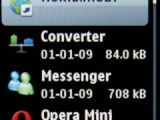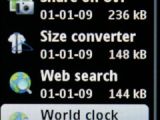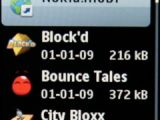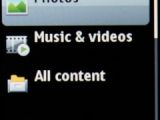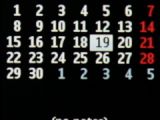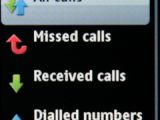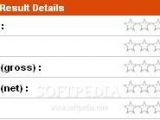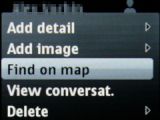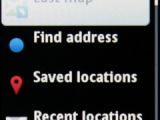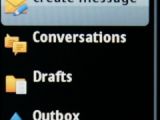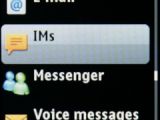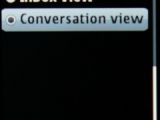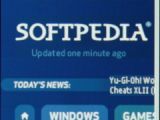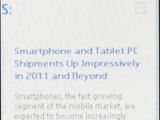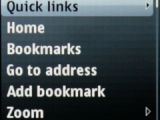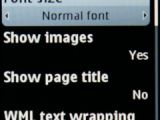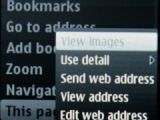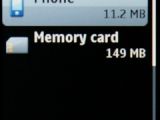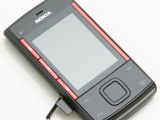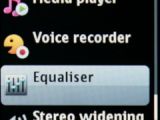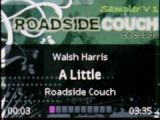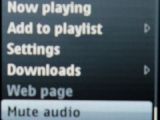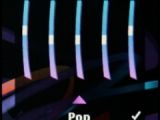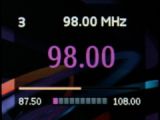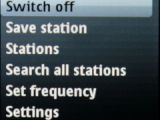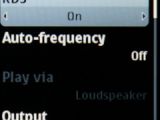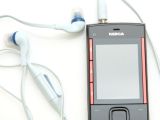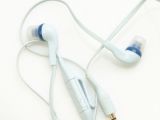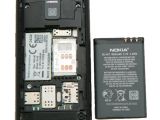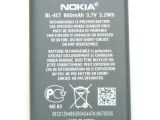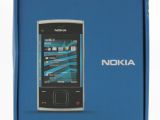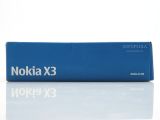Nokia's Xseries is a successful sequel to the XpressMusic mobile phones lineup and comprises a wide range of music phones. The X3 was one of the first handsets of the Xseries, along with the more advanced X6.
The Finnish giant rehashed the S40 UI of the XpressMusic phones, but added a few new features and embeded it into the Xseries music phones.
Unfortunately, we still don't have multi-tasking, something that other brands like Samsung and LG have already introduced into their feature-phones.
One year has passed since its debut on the market and Nokia's Xseries already includes 7 music phones.
Announced in September 2009, Nokia X3 was launched on the market in December 2010. Currently the handset can be purchased for about 150 US dollars without a subscription, which puts it in the low-budget category.
Potential customers can choose from two available color schemes: Red on Black or Blue on Silver.
style="color: #aa3333">Design
Nokia X3 has a typical slider design with a few nifty features that make it easier to handle such as the external multimedia keys. What's really interesting is the fact that the phone doesn't look cheap, even though it is now tagged as low-budget. The matte plastic covering the back of the phone doesn't catch fingerprints and feels nice to the touch. However, it seems that the thin battery cover is slightly joggling when one is sliding the phone up or down. Still, the sliding mechanism seems pretty solid, even with the 1mm gap between the two parts.
The handset features a small-sized 2.2-inch display, which is “trapped” between two red metallic frames. The one on the left also includes three multimedia keys that are used to control the music player without the keypad. Above the display is the usual earpiece, but the phone lacks an ambient light sensor, which means the display brightness won't change according to the environment.The soft keys and Accept / Reject calls keys have been placed below the screen, around the D-pad button. The slider doesn't have a dedicated power button; instead, it uses the red Reject calls button. The phone also includes the option to make the D-pad light pulse to the rhythm of the songs. To enable the function go to Settings / Lights / Music lights, and choose On.
The right side of the phone features the dual-volume key and a dedicated camera button. The microSD card slot has been placed on the left side, while on top there's a charging port, a microUSB port and a 3.5mm audio jack port. The two stereo loudspeakers that make the X3 a music phone have been placed on the top and bottom of the slider. The flat alphanumeric keypad is revealed when one slides open the phone. The layout of the keys is standard with large enough and responsive buttons. The keypad is made from a thin metallic material that enriches the messaging experience. The 3.2-megapixel photo shooter on the back of the phone lacks LED flash or any other extra features. The X3 measures 96 x 49.3 x 14.1 mm and weighs 103g (battery included), which puts it in the mid-sized category. Overall, Nokia X3 looks pretty much like a standard slider. It doesn't impresses at first glance, but it's not ugly either.style="color: rgb(255,102,0)">Display and Camera
Nokia X3 comes with a 2.2-inch QVGA display with 262K colors support and 240 x 320 pixels resolution.
Unfortunately, this is one of phone's disappointments, as the colors look washed off and viewing angles are simply agonizing. If you don’t position the phone in such a way that you can see its screen dead on, then you won't be able to see much. The same goes for sunlight legibility which is very low, so you have almost zero chances to distinguish anything on the screen when it's exposed to strong light. The small size is another downside, but one can get passed this as we're talking about a low-budget handset after all.The 3.2-megapixel camera embedded in the Nokia X3 doesn't come with a LED flash, autofocus or any other extra feature that could improve the picture shooting experience. The maximum resolution that can be used for pictures is of 2,048x1,536 pixels, while clips can be recorded with a maximum resolution of 320x240 pixels (QCIF@15fps) and can be saved in .MP4 format.
In terms of picture quality, the camera is pretty decent for a 3.2-megapixel snapper, but it heavily relies on favorable light conditions. Even though it's not the best camera module out there, you can take good pictures when you need to capture special moments that don’t require the use of a professional tool. Overall, the performance of the camera is satisfactory and those that get the phone for its camera too, will probably be pleased.style="color: rgb(153,204,0)">Menu and Software
Nokia X3 runs on a S40 6th Edition UI, which is the latest user interface coming from Nokia. Once one of the most user-friendly interfaces on the market, the S40 is unchanged on the surface. Even though if it's a step forward compared with older versions, the X3 is clunky, obsolete and overrated when it comes to user experience.
The firmware includes the Flash Lite player 3 and MMS 1.3. Message support has been improved to accept 600KB attachments. There is better support for WMA and WMV codecs. The slider has some useful applications, such as Search, Maps, Alarm clock, Calendar, To-do list, Notes, Calculator, Countdown timer, Ovi Store, World Clock and Stopwatch. Also, some Java games come preinstalled – Block'd, City Bloxx, Bounce Tales, Diamond Rush, and Guitar Rock Tour. The phone is compatible with Java MIDP 2.1 applications, but there is a limit to the size of any application that you might want to install on it, and that's the usual 1MB. This might be the case with most Java-compatible applications. The menu is customizable and you can designate any MP3, MIDI or AAC file as a ringtone. The phonebook can store up to 2,000 contacts and each can be filled with up to five different phone numbers. The fonts can be customized, but only those displayed when opening the Contacts, Web browser and messaging sections. Nokia X3 lacks multi-tasking and, by the look of it, the Finnish handset manufacturer won't be introducing the feature too soon. Also, even though the phone is snappy when one is browsing the menu, there's a very annoying lag when you slide up/down the phone. It takes about 2 seconds each time you want to open or close the phone and during this time you get a loading wheel on the screen.style="color: rgb(153,51,102)">Communication
The X3 slider is fully compatible with GPRS and EDGE Class 32, but lacks any faster technologies such 3G or Wi-Fi. Benchmarks reveal that the device underperforms when it comes to data-transfer speeds (EDGE 136 Kbit/s download and 69 Kbit/s upload), but that may greatly vary depending on the location and carrier.
The phone also features Bluetooth 2.1 and microUSB 2.0. Synchronization with the PC is possible through the microUSB port along with charging the battery. The phone does not have a built-in GPS receiver, but it comes with the Nokia Maps, which can be used to find addresses.The phone doesn't include any maps but users can download the maps on their desktop computer and sync them with the phone. There's also a new feature added to the Contact list called Find on map, which enables users to pinpoint a contact's address with Nokia Maps. Of course, this only works if the address field contains a real address.
In terms of messaging, the device accepts standard text messages, MMS 1.3 (600 KB attachments), as well as emails. The message client works with POP3, SMTP, and IMAP4 protocols, and supports more than one email account. The X3 also displays SMS messages like Conversations, but this can be changed back to Inbox, if you don't like it. You can do that from Messaging / Message settings / General settings / Change message view. The device comes with Opera Mini browser, in addition to the integrated WebKit-based HTML browser. I was content with the native browser's performance, which seems to work fast and the page rendering is ok, so I'm recommending using this one over the Opera Mini browser. The scrolling is smooth and Flash Lite 3.0 support is also nice. The quadband (GSM 850 / GSM 900 / GSM 1800 / GSM 1900) network-compatible slider has a very good GSM signal reception. Even though the phone comes with “Voice Clarity” enhancement technology, I found the sound during phone calls average. On the other hand the vibration alert is more than decent, so users won't miss calls when the device is kept on the Silent profile.style="color: #aa3333">Processor and Memory
Nokia X3 embeds 46MB internal memory and microSD card slot for memory expansion up to 16GB. The external memory card slot can be found on the left side of the phone and it's covered by a plastic stripe.
The handset lacks multitasking and can only run four applications in the background. If you haven't closed the applications after you finished working with it, you will get a message displayed on the screen, that will let you choose which app you want to close. And no, you won't be able to switch to any of the apps in the list, you are limited to selecting the app and the phone will close it for you.style="color: rgb(255,102,0)">Multimedia
One of the strong points of the slider and the reason it has the Xseries tag on it, is represented by the multimedia features. The phone truly shines when it comes to music sound quality, which is surprising if we take into consideration that the other features of the phone are mostly average. The Xseries lineup has been especially developed to include exceptional music features and X3 is no exception to this rule. The phone comes with a 3.5mm audio jack port and Nokia Stereo Headset WH-205 earphones. The quality of the sound definitely recommends it as a music phone.
The included earphones are definitely under-performing, so users should switch them with better ones for an enhanced multimedia experience. Even though the integrated MP3 player's interface is old and basic, it includes a few advanced specific features such as: Equalizer, Stereo widening, Shuffle and Repeat. The Equalizer can be customized or the predefined settings can be used: Normal, Pop, Rock, Jazz and Classical. The mobile phone is compatible with MP3, AAC, AAC+, eAAC+ and WMA formats. Thanks to the dedicated external keys, users will be able to easily control the music player or the radio without even pulling out the phone from their pockets. Of course the phone is also compatible with Bluetooth headsets. The Stereo speakers have a very low quality sound and are the only downside of the phone when it comes to listening to music (a major one). There's also an FM radio with the RDS function and built-in antenna, so you won't need to insert the headphones for the radio to work. The video player lacks support for DivX or XviD codecs and is limited to 3GPP (H.263), H.264 and MPEG-4 formats. Overall, the Nokia X3 is one of the best low-budget music phones that the Finnish handset manufacturer has launched on the market so far.style="color: rgb(153,204,0)">Battery
The 860 mAh Li-Ion (BL-4CT) battery has an officially stated life expectancy of 380 hours in standby and of about seven hours and 30 minutes in talk-time mode. Music playback is rated at around 26 hours. My device made it with only two full charges per week on average use, but it's understandable with such a low power battery.
style="color: rgb(153,51,102)">Impressions
For a device that opens up an entire series, the X3 is a pretty decent phone. Unfortunately, the slider's software is plagued by a few bugs and its UI is old and unattractive. It makes up for it thanks to its excellent music features, but otherwise the X3 doesn't impress at all.
The Good
The Bad
style="color: #aa3333">Sales Package
Nokia X3 handset Nokia Battery (BL-4CT) Nokia High Efficiency Charger (AC-8) Nokia Headset (WH-205) Nokia 2 GB microSD card (MU-37) Nokia Connectivity Cable (CA-101D) User guide
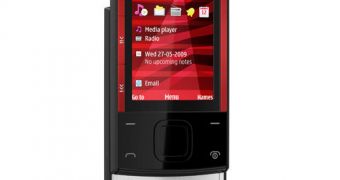
 14 DAY TRIAL //
14 DAY TRIAL // 
